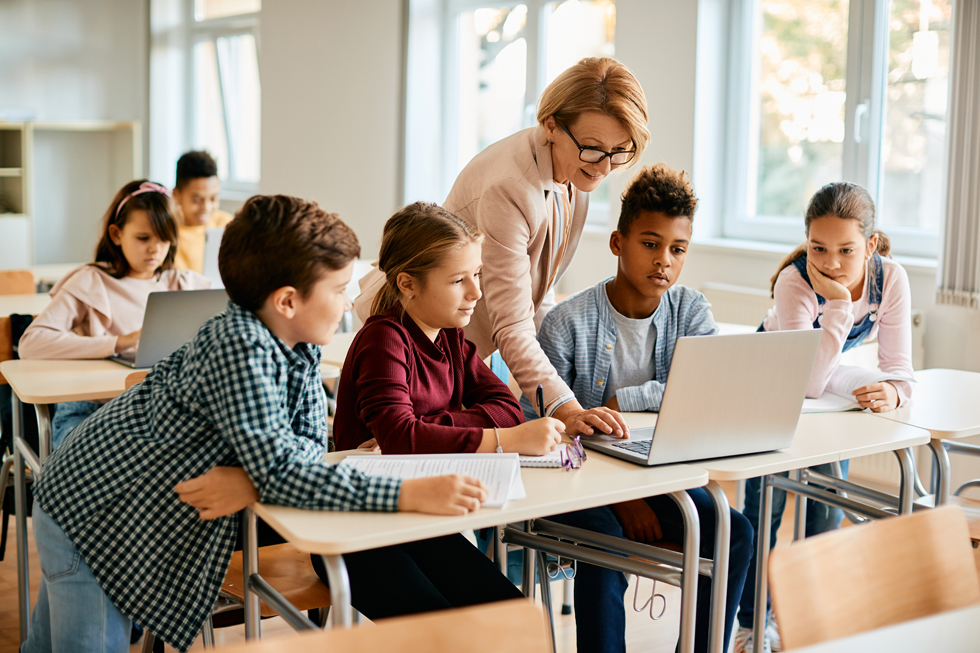Sign Up With Us: Events and Campaigns to Save Temecula Schools
Sign Up With Us: Events and Campaigns to Save Temecula Schools
Blog Article
The Impact of Institution Environments on Academic Success and Personal Well-Being
The style of instructional spaces, including natural illumination and ergonomic furniture, can enhance pupils' focus and convenience. How can colleges strategically enhance these facets to better support their students?
Physical Format and Style
Just how does the physical layout and style of a school effect academic success? The plan and visual of a college setting can dramatically influence pupils' understanding results.
Natural illumination and efficient air flow systems are essential in improving cognitive feature and reducing absence. Research studies have actually shown that class with ample all-natural light improve trainee concentration and decrease sensations of sleepiness. Furthermore, ergonomic furnishings tailored to pupils' needs can avoid physical pain, allowing for extended emphasis and involvement in academic tasks.
Access to outdoor rooms and cosmetically pleasing surroundings also play an essential role - Save Temecula Schools. Environment-friendly areas and well-maintained college grounds provide possibilities for exercise and mental leisure, both of which are essential for keeping high levels of scholastic performance. In significance, a thoughtfully made physical atmosphere can act as a driver for academic quality, fostering an ambience that supports both teaching and understanding
Classroom Environment
A favorable classroom ambience is fundamental to accomplishing scholastic success. An environment that fosters a feeling of safety, inclusivity, and common respect motivates pupils to involve even more actively in their knowing processes. The atmosphere of a class, consisting of aspects such as illumination, noise levels, and seating setups, can substantially affect pupil focus and inspiration. A well-ventilated, well-lit classroom with very little interruptions can improve cognitive feature and reduce stress and anxiety, thus advertising better scholastic end results.
Moreover, the classroom ambience must support a society of collaboration and open interaction. When pupils really feel comfortable revealing their concepts and asking concerns, they are more probable to involve deeply with the material and develop essential believing skills - Save Temecula Schools. Peer communications and group tasks can improve learning by supplying varied point of views and promoting team effort
In addition, establishing clear expectations and regular routines can create a structured environment that allows trainees to concentrate on their research studies. By reducing uncertainty and giving a foreseeable framework, students can much better handle their time and duties. Inevitably, a positive class environment not just boosts academic performance however likewise adds to the general well-being of pupils, preparing them for future academic and individual ventures.
Teacher-Student Relationships
Structure on the relevance of a positive class environment, the partnerships between educators and trainees play a pivotal duty in shaping academic success. A healthy and balanced teacher-student connection fosters a learning environment where trainees really feel valued, understood, and sustained, which dramatically improves their motivation and interaction. When pupils view their teachers as empathetic and friendly, they are more probable to take part proactively in course and seek aid when needed, adding to a much deeper understanding of the topic.

Effective interaction is key to supporting these partnerships. Teachers that utilize open, considerate, and regular communication develop a structure of count on. This trust fund makes it possible for pupils to reveal their worries and ideas openly, promoting a collective understanding setting. Basically, strong teacher-student partnerships are a keystone of academic success, look at this web-site playing an essential duty in site both scholastic success and personal development.
Peer Communications
Peer communications significantly influence scholastic success by shaping a pupil's cognitive and social development. Positive peer communications can boost a pupil's inspiration and engagement in scholastic tasks through collective discovering and shared support.

Reliable peer interactions additionally add to the advancement of vital life skills, such as communication, collaboration, and dispute resolution. These social expertises are vital for both scholastic success and individual well-being, highlighting the value of fostering favorable peer characteristics within the school setting.
Extracurricular Activities
Involving in extracurricular activities plays a crucial duty in a student's academic success and personal growth. Study consistently shows that trainees who participate in extracurricular tasks tend to accomplish higher scholastic performance.
Furthermore, extracurricular participation promotes a feeling of belonging and neighborhood, which is crucial for individual wellness. Joining team activities allows pupils to develop and enhance social media networks, enhancing their psychological and social knowledge. These interactions are important for developing interpersonal abilities that are helpful in both future and academic specialist environments.
In addition, extracurricular image source tasks supply a useful outlet for pupils to explore their interests and interests past the common curriculum. This expedition can result in the discovery of brand-new talents and prospective occupation courses, further inspiring trainees to engage even more deeply in their scholastic job. To conclude, the function of after-school activities expands past simple entertainment; they are indispensable to fostering an all natural instructional experience that promotes both scholastic success and personal growth.
Final Thought
In sum, the influence of college atmospheres on both scholastic success and personal well-being is extensive. Thoughtfully created physical layouts and class, along with favorable teacher-student partnerships and constructive peer communications, substantially enhance pupil motivation and interaction. The existence of helpful instructors can minimize stress and anxiety, cultivating a nurturing atmosphere favorable to alternative development. These components jointly highlight the significance of developing and keeping optimal college atmospheres for the benefit of students' personal and scholastic growth.
Eventually, a positive classroom ambience not just enhances academic performance yet also adds to the general health of students, preparing them for future academic and personal ventures.

Report this page